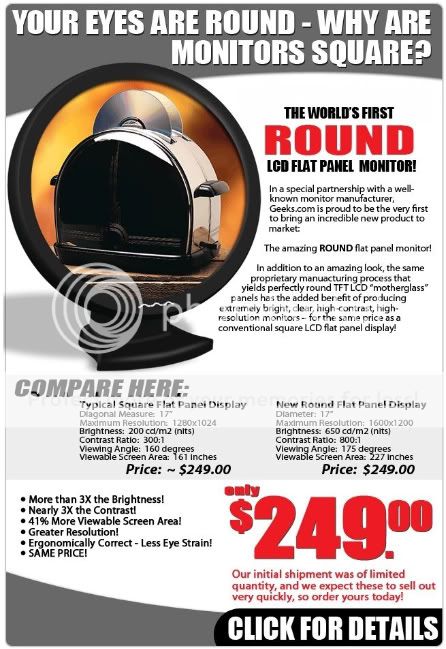Battou
TPF junkie!
- Joined
- May 10, 2007
- Messages
- 8,047
- Reaction score
- 66
- Location
- Slapamonkey, New York
- Website
- www.photo-lucidity.com
- Can others edit my Photos
- Photos NOT OK to edit
They're not in any of my cameras.
nor mine
Follow along with the video below to see how to install our site as a web app on your home screen.

Note: This feature currently requires accessing the site using the built-in Safari browser.
They're not in any of my cameras.
Optically it would not work, because the light is a cone. What I need to ask, is why not circular sensors?
Alex_B here is a link to the aluminum story.. http://physicsworld.com/cws/article/news/20033
it's not new but gives cause to hope.
mike
Actually, looking at that again, I suspect Vader meant to ask why mirrors and sensors aren't round.
The answer to that would presumably be that whilst making lenses round is the most sensible/efficient method of doing things for several reasons, we are far more likely to want a rectangular result than a circular one.
The point at which it becomes sensible to change format is at the mirror/film plane/sensor/focusing screen. There would be no advantage to making those circular and the design and manufacture would be a lot harder and lead to unnecessarily larger equipment.
But it is not alumin(i)um!!! transparent aluminum is a star trek invention and will never work since it is a metal.
that article is old, and the idea even older. they talk about alumina, which is aluminium oxide. aluminium oxide is not aluminium, just as sapphire is not aluminium, although it contains aluminium atoms.
the hardness of alumina has nothing to do with the properties of the metal known as alumin(i)um
(sorry I took this personal, but I have been working on alumina for the recent 4 years)
But it is not alumin(i)um!!! transparent aluminum is a star trek invention and will never work since it is a metal.
that article is old, and the idea even older. they talk about alumina, which is aluminium oxide. aluminium oxide is not aluminium, just as sapphire is not aluminium, although it contains aluminium atoms.
the hardness of alumina has nothing to do with the properties of the metal known as alumin(i)um
(sorry I took this personal, but I have been working on alumina for the recent 4 years)
Not a problem. In what aspect may I ask?
I have a feeling that if they ever do start using glass made in part from aluminium we will indeed be talking about 'aluminium' and 'silicon' lenses.
And probably 'silicone' lenses to boot!
Wow.....I didn't expect to get such thourough and technical (and quantity) responses to this thread but great explanations. It all makes sense especially the aperture which I hadn't though about.
Next up, I'm making a round monitor to hang on my wall
